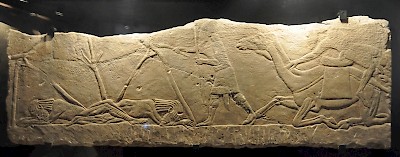Duma
Q2719371
Duma, known to the Babylonians as Adummatu, is situated in the north of what is now Saudi-Arabia, halfway between the Gulf of Aqaba in the west and the lower reaches of the Euphrates in the east. It is at the end the Wadi Sirhan, a depression and seasonal river that begins at Qasr el-Azraq in eastern Jordan.
The town of Duma was the religious and (probably) political center of a federation of desert tribes that was called Qedar. Using dromedaries, they would roam along the Wadi Sirhan and could move all the way up north to the Tadmor oasis (Palmyra), which was another political center. Typically, the Qedarites were ruled by a king and a priestess.
Another relevant tribe in Duma was called Nebayot, which lived between this religious center and the Tayma oasis in the south. This area was an important part of the northeastern branch of the Incense Route: starting in Arabia Felix (modern Yemen), merchants would travel to Yatrib (modern Medina), where they could continue to the northwest to the Al-‘Ula oasis, Tabuk, Petra, and the Mediterranean, or take the northern branch to Tayma, Duma, and Babylonia. The presence of travelers is documented in graffiti, written in the Taymanite and Minaean scripts from the south.
So far, twenty-three ancient graffiti have been discovered, documenting prayers to Atarsamain (the goddess Ištar or the Morning Star), to Nuhaya, and to the god Ruldawu or Ruda (who was known as Orotalt to the Greeksnote).
The oasis remained an important node in the network of desert routes. The Romans called it Dumata.note